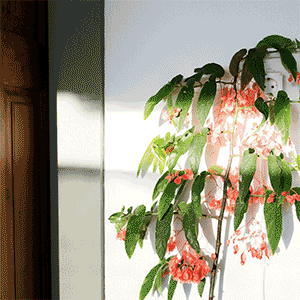urbano
Aktiv medlem
Hittade denna artikel på en websida. Skriven av Graham Nicholsen och refererar till en enkät ställd till 200 av Storbrittaniens ledande fotoexperter såsom fotografer, tillverkare, detaljister etc.
Håller ni med? Har själv för liten erfarenhet av många andra modeller, men äger förstås en OM-1:a med Zuiko-objektiv. Ja, den fungerar fortfarande alldeles utmärkt.
>>>>>>>>>>>>>>>>>>
The July 1997 issue of the UK magazine 'Buying Cameras' contains an article
entitled 'The best 35mm cameras ever' in which they published the results
of a survey of over 200 of the UK's leading photo experts including
photographers, camera manufacturers and dealers. They were asked to vote
for their top five 35mm cameras and the results were used to produce a top
20 list.
The list was as follows:
20th Pentax LX
19th Canon F-1n
18th Leica I
17th Leica III3
16th Nikon F90X
15th Canon T90
14th Pentax Z-1P
13th Nikon F3
12th Nikon F4
11th Nikon F2
10th Pentax ME-Super
9th Olympus Trip 35
8th Canon EOS 1n
7th Minolta 7000
6th Pentax Spotmatic
5th Leica M3
4th Nikon F5
3rd Leica M6
2nd Nikon F
1st Olympus OM-1
The OM-1 received the following write-up under the heading 'The Greatest
35mm Camera Ever!':
'It is almost impossible to convey the impact that the introduction of the
Olympus OM-1 had on the camera market when it was launched in 1973.
This tiny camera, weighing a mere 490g(sic), slashed over 35% off the size
and weight of the big and bulky SLRs of the time.
Suddenly there was a proper system camera that could travel the world
without making a nuisance of itself.
Olympus intended to call the camera the M-1, but Leica objected because of
their M-series rangefinder camera, and the decision was made to switch to
OM-1. A classic dynasty was born that's now with the OM-4Ti.
Introduced into the era of psychedelic music and flared trousers, the OM-1
has a timeless look that's as desirable today as it was over 20 years ago.
Fashionable from the first, the OM series found favour with the likes of
Lichfield and Bailey, and even went on expeditions with Sir Chris
Bonington.
Not only is the camera small and light, it's also elegant and modern
looking. As well as the traditional chrome and black design, an all-black
version was available that was much favoured by aspiring press
photographers.
The camera is basic, with a manual matched needle exposure, but extremely
easy to use - once you get used to the fact that the 1-1/1000sec shutter
speed range is on a ring tucked away round the lens throat and the
apertures are at the front rather than the rear of each lens.
One of the most amazing aspects of the launch of the OM-1 was the
simultaneous introduction of a 29 lens line-up using the new, wide-throated
bayonet mount - everything from an 8mm up to a 1000mm lens.
The versatility of the OM system, and the lightness of the camera, means
that the OM-1 has probably travelled further than any other 35mm camera.
Excellent for location work, and equally suitable for students, this is a
camera that has a special place in the hearts and minds of generations of
photographers.
In 1979 the camera was updated as the OM-1n, with the incorporation of a
flash-ready signal in the viewfinder, but a decade later it had was(sic)
discontinued. Today, for around £150, you can still buy this slice of
photographic history if you can find one second-hand.
Mention the OM-1 to anyone who took up photography in the mid '70s and
their eyes mist over. Universally adored by its owners and held in high
regard by the photo industry, we're not surprised that this camera has
topped our poll.
Devoid of snob value, the OM-1 has earned the number one position because
of its mix of solid photographic principles and practical handling.
As we head towards an increasingly digital future, the OM-1 is the best
example of photography's recent past. We will never see its like again...'
Regards,
Graham Nicholson
Håller ni med? Har själv för liten erfarenhet av många andra modeller, men äger förstås en OM-1:a med Zuiko-objektiv. Ja, den fungerar fortfarande alldeles utmärkt.
>>>>>>>>>>>>>>>>>>
The July 1997 issue of the UK magazine 'Buying Cameras' contains an article
entitled 'The best 35mm cameras ever' in which they published the results
of a survey of over 200 of the UK's leading photo experts including
photographers, camera manufacturers and dealers. They were asked to vote
for their top five 35mm cameras and the results were used to produce a top
20 list.
The list was as follows:
20th Pentax LX
19th Canon F-1n
18th Leica I
17th Leica III3
16th Nikon F90X
15th Canon T90
14th Pentax Z-1P
13th Nikon F3
12th Nikon F4
11th Nikon F2
10th Pentax ME-Super
9th Olympus Trip 35
8th Canon EOS 1n
7th Minolta 7000
6th Pentax Spotmatic
5th Leica M3
4th Nikon F5
3rd Leica M6
2nd Nikon F
1st Olympus OM-1
The OM-1 received the following write-up under the heading 'The Greatest
35mm Camera Ever!':
'It is almost impossible to convey the impact that the introduction of the
Olympus OM-1 had on the camera market when it was launched in 1973.
This tiny camera, weighing a mere 490g(sic), slashed over 35% off the size
and weight of the big and bulky SLRs of the time.
Suddenly there was a proper system camera that could travel the world
without making a nuisance of itself.
Olympus intended to call the camera the M-1, but Leica objected because of
their M-series rangefinder camera, and the decision was made to switch to
OM-1. A classic dynasty was born that's now with the OM-4Ti.
Introduced into the era of psychedelic music and flared trousers, the OM-1
has a timeless look that's as desirable today as it was over 20 years ago.
Fashionable from the first, the OM series found favour with the likes of
Lichfield and Bailey, and even went on expeditions with Sir Chris
Bonington.
Not only is the camera small and light, it's also elegant and modern
looking. As well as the traditional chrome and black design, an all-black
version was available that was much favoured by aspiring press
photographers.
The camera is basic, with a manual matched needle exposure, but extremely
easy to use - once you get used to the fact that the 1-1/1000sec shutter
speed range is on a ring tucked away round the lens throat and the
apertures are at the front rather than the rear of each lens.
One of the most amazing aspects of the launch of the OM-1 was the
simultaneous introduction of a 29 lens line-up using the new, wide-throated
bayonet mount - everything from an 8mm up to a 1000mm lens.
The versatility of the OM system, and the lightness of the camera, means
that the OM-1 has probably travelled further than any other 35mm camera.
Excellent for location work, and equally suitable for students, this is a
camera that has a special place in the hearts and minds of generations of
photographers.
In 1979 the camera was updated as the OM-1n, with the incorporation of a
flash-ready signal in the viewfinder, but a decade later it had was(sic)
discontinued. Today, for around £150, you can still buy this slice of
photographic history if you can find one second-hand.
Mention the OM-1 to anyone who took up photography in the mid '70s and
their eyes mist over. Universally adored by its owners and held in high
regard by the photo industry, we're not surprised that this camera has
topped our poll.
Devoid of snob value, the OM-1 has earned the number one position because
of its mix of solid photographic principles and practical handling.
As we head towards an increasingly digital future, the OM-1 is the best
example of photography's recent past. We will never see its like again...'
Regards,
Graham Nicholson






